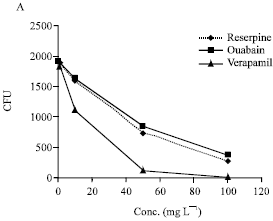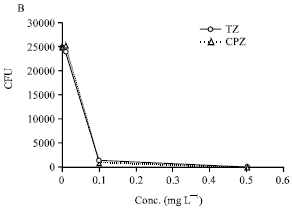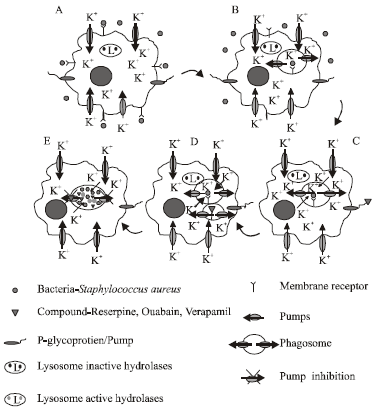Research Article
Reserpine, Ouabain and the Calcium Channel Blocker Verapamil, Cause Intracellular Killing of Staphylococcus aureus
Unit of Mycobacteriology and UPMM (Centre for Medical Parasitology and Microbiology), Institute of Hygiene and Tropical Medicine, Universidade Nova de Lisboa, Rua da Juuqueira 96, 1349-008 Lisbon, Portugal
Miguel Viveiros
Unit of Mycobacteriology and UPMM(Centre for Medical Parasitology and Microbiology), Institute of Hygiene and Tropical Medicine, Universidade Nova de Lisboa, Rua da Juuqueira 96, 1349-008 Lisbon, Portugal
Diane Ordway
Colorado State University, Department of Microbiology, Immunology and Pathology, Mycobacteria Research Laboratory, 1682 Campus Delivery, 200 West St Fort Collins, CO 80523-1682
Jette E. Kristiansen
South Danish University, Sonderborg Syghus, 64 Sonderborg, Denmark
Joseph Molnar
Department of Microbiology and Immunology, Institute of Medical Microbiology, University of Szeged, H-6720, Szeged, Dom ter 1 0. Hungary
Leonard Amaral
Unit of Mycobacteriology and UPMM Centre for Medical Parasitology and Microbiology), Institute of Hygiene and Tropical Medicine, Universidade Nova de Lisboa, Rua da Juuqueira 96, 1349-008 Lisbon, Portugal











